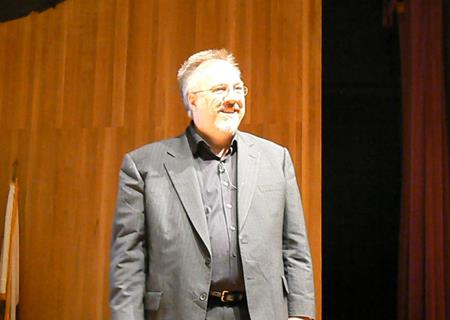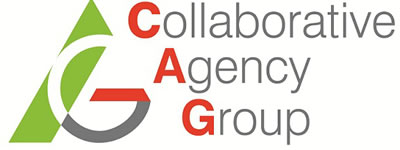
09 Jul David Warlick

Speaker: David Warlick
Education Technologist and 21st Century Learning Expert
Speech Topics Include:
- Literacy & Learning in the 21st Century
- Our Students • Our Worlds
- Cracking the ‘Native’ Information Experience
- Telling the New Story
Keynote speaker David Warlick’s unique voice and message combine a wide range of experiences, both in and outside the education arena. He ran two businesses before graduating from high school and spent more than a year in manufacturing before completing his undergraduate work. Mr. Warlick worked for nearly ten years as a middle school social studies, math, and science teacher, during which he also wrote award-winning instructional software and introduced hundreds of teachers to the educational potentials of personal computers.
In 1984, David moved to a central office position, as Director of Technology, and then on to the North Carolina State Department of Public Instruction where he served as a technology integration consultant and built the nation’s first state department of education web site.
Since 1995, Mr. Warlick has been the owner and principal consultant of The Landmark Project, a professional development and innovations firm in Raleigh, NC. During this time, as a speaker David Warlick has spoken at conferences and delivered workshops for educators throughout the U.S., Canada, Europe, Asia, the Middle East, and South America.
Keynote speaker David Warlick has been an innovator and leader in the field of educational technology and a prolific programmer. His classroom blogging site, Class Blogmeister, has served more than a quarter of a million teachers and students, and his attribution tool, Citation Machine, receives nearly a million page views a day. These, and all of his other web tools for teachers, are free.
David has also written four books about technology, contemporary literacy, and lifelong learning, and has contributed to other publications including Technology & Learning Magazine, ALA’s KnowledgeQuest, Education World, and CUE Online. David has been quoted extensively in Education Week, The San Francisco Chronicle, The New York Times, Washington Post, and USA TODAY.
Literacy & Learning in the 21st Century
As little as we know about the future, for which we are preparing our children, it is clear that it will be a place that is governed by information. Accessing, processing, building with, and communicating that information is, and will be, a major part of our daily occupational, professional, and personal work and play.
Being literate in this future will certainly involve the ability to read, write, and work with numbers. However, the concept of literacy — “the basics” — in an information-governed technology-rich world will be far richer and more comprehensive than the “3Rs” that continue to define schooling for many. This enlightening and thought-provoking address will describe how our notions of literacy must expand to harness a rapidly changing information landscape where content and knowledge are increasingly networked, digital, and overwhelming.
Join educator, David Warlick, as he explores this new information landscape and prepare to be on the edges of your seats.
Our Students • Our Worlds
For decades, education has been an easy institution to define. It consisted of acknowledged literacy skills, definable bodies of knowledge, and pedagogies for teaching willing students within information-scarce learning environments. Today, for the first time in decades, we are questioning our notions about teaching and learning as we adapt to a world that is changing faster than our ability to react. We are struggling to rethink what it is to be educated, to reinvent where it happens, and redefine our roles as educators — as the line between teacher and student appears to blur.
This presentation, by 30+ year educator, author, and technologist, David Warlick, will explore some of these changes and challenges and arrange them as a set of converging conditions that might actually hold the clues for redefining and retooling 21st century education.
Cracking the ‘Native’ Information Experience
Much has changed! Change is constant!
..And today, change is happening in schools. Governance boards, administrators, librarians and classroom teachers are combining efforts to resist the conservative status-quo-sustaining nature of our institution and seeking to define and implement a new style of learning – learning 2.0.
For many of our students, change is status-quo. They’ve witnessed an emerging new information environment and have had a hand in shaping its landscape, seamlessly utilizing technologies that define their culture. The outside-the-classroom information experiences of our students are deep, diverse, rich, and compelling — and understanding these information experiences may be a key to achieving more effective and relevant formal learning.
Spend some time with David Warlick, exploring the qualities of the native information experience and observe how they might be — and are being harnessed in classrooms around the world.
Telling the New Story
It is often said that “the future is not what it used to be.” In this information-driven, technology-rich world, where jobs are created and become obsolete in only a few years, preparing our children for a future that we cannot even imagine has become one of our society’s greatest challenges. There are many barriers that prevent us from retooling our classrooms for 21st century teaching and learning. But at the core are the “stories” about education that we share. Most adults base their images of schooling on their education experiences from 20, 30, or 40 years ago. It is a story that is etched almost indelibly by years of being taught in isolated, assembly-line classrooms.
Our classrooms — what they look like, how the furniture is arranged, what teachers and students do, what is taught, how it is taught, and why — are all modeled after old and outdated stories that are still being told by our culture. We must change these stories and tell new ones, based on a new world, an unpredictable future, almost unlimited opportunities, a new kind of student, and compelling new learning experiences that have never been possible before.
This engaging presentation will inspire educators to craft and tell new stories. It will provoke visions of a new kind of classroom based on a new information environment, because only with visions of classrooms that are so irresistible that they will wipe out the old images, will we be able to reform education for the 21st century.





